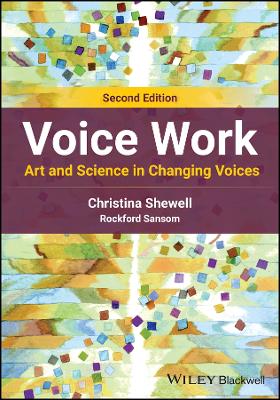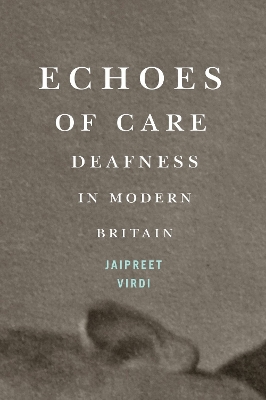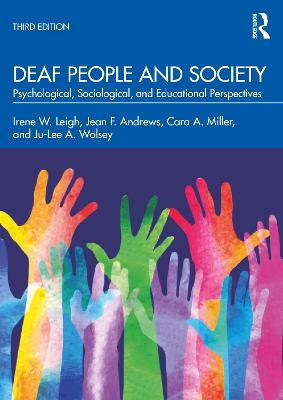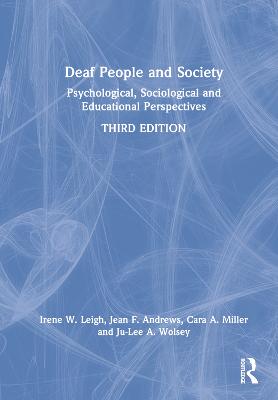Video-Based Aural Rehabilitation Guide
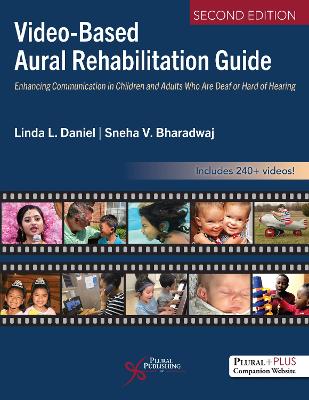 portes grátis
portes grátis
Video-Based Aural Rehabilitation Guide
Enhancing Communication in Children and Adults Who Are Deaf or Hard of Hearing
Bharadwaj, Sneha V.; Daniel, Linda L.
Plural Publishing Inc
12/2024
426
Mole
9781635507539
Pré-lançamento - envio 15 a 20 dias após a sua edição
Descrição não disponível.
Preface
Acknowledgments
Contributors
Dedication
Chapter 1. Overview of Aural Rehabilitation
Sneha V. Bharadwaj, Linda L. Daniel, and Susan G. Allen
Learning Objectives
Introduction
Overview of Anatomy and Physiology of the Auditory System
Brief Review of Audiology
Classification of Hearing Loss
Implications of Hearing Loss
Comorbidities
Interprofessional Practice and Collaboration
Treatment Options for Persons Who Are DHH
Cultural Diversity
Scope of Aural Rehabilitation Services
Impact of Hearing Loss on the Individual: The International Classification of Functioning, Disability, and Health
Advocacy
Spotlight on a Family of Four With Profound Prelinguistic Deafness: Parental Advocacy
Summary
References
Recommended Internet Sites for Further Learning
Study Questions
Answer Key
Chapter 2. Hearing Aids and Hearing Assistive Technology Systems
Kathryn B. Wiseman, Amyn M. Amlani, and Sneha V. Bharadwaj
Learning Objectives
Introduction
Candidacy and Selection for Prescription Hearing Aids
Prefitting Considerations for Prescription Hearing Aids
Hearing Aid Styles
How Does a Hearing Aid Work?
Procedures for Fitting and Verification of Prescription Hearing Aids
Counseling and Education
Teleaudiology and Aural Rehabilitation
Cultural Responsiveness
Challenges With Obtaining and Using Hearing Aids
Daily Care and Troubleshooting of Hearing Aids
Hearing Assistive Technology Systems
Nontraditional Hearing Aids
Over-the-Counter Hearing Aids
Spotlight on Roberta: Audiologic Consultation
Summary
References
Recommended Internet Sites for Further Learning
Study Questions
Answer Key
Chapter 3. Neuroprosthetic Hearing Devices for Children and Adults: Cochlear Implants and Auditory Brainstem Implants
Sneha V. Bharadwaj, Linda L. Daniel, B. Robert Peters, and Kristin King
Learning Objectives
Introduction
Cochlear Implants
Cochlear Implant: Parts and Function
Candidacy
Interprofessional Collaborations
Surgical and Technological Considerations
Cochlear Implant Surgery
Cochlear Implant Programming
Reimbursement
Aural Rehabilitation Following Cochlear Implantation
Spotlight on Tucker: Early Identification and Intervention
Summary of Cochlear Implants
Introduction to Auditory Brainstem Implants
Candidacy
Surgery and Risks
Interprofessional Collaborations
A Case Presentation: Five-Year-Old Justine
Communication Outcomes in Persons With an ABI
Spotlight on Aanya: A Child With an ABI
Summary
References
Recommended Internet Sites for Further Learning
Study Questions
Answer Key
Chapter 4. Factors Influencing Intervention Strategies and Communication Outcomes in Children Who Are Deaf or Hard of Hearing
Ellen A. Rhoades, Linda L. Daniel, and Sneha V. Bharadwaj
Introduction
Hearing Loss
Hearing Technology
Language Environment
Cultural Diversity
Support Systems
Neurodevelopmental Differences
Spotlight on Jaxson: A Child With CHARGE Syndrome
Summary
References
Study Questions
Answer Key
Chapter 5. Aural Rehabilitation Considerations for Persons Who Are Deaf or Hard of Hearing From Culturally Diverse Backgrounds
Alliete R. Alfano, Michael Douglas, and Daniela B. Reyes
Learning Objectives
Introduction
Terminology and Frameworks Relevant to Providing Culturally Responsive Services to Children and Adults Who Are DHH
Terminology and Misconceptions Related to Second Language Acquisitions and Bi/Multilingualism
Assessment Procedures for Bi/Multilingual Persons Who Are Deaf or Hard of Hearing
Case Presentation on Hiti: Assessment of a Bilingual, Bicultural Child
Treatment Considerations for Working With Persons Who Are DHH and Culturally Diverse
Strategies for Intervention for Persons Who Are DHH and From Culturally Diverse Backgrounds
Spotlight on Amari: Culturally Adapted Intervention
Summary
References
Recommended Internet Sites for Further Learning
Resources for Other Languages
Study Questions
Answer Key
Chapter 6. Fundamentals of Assessment of Communication Needs in Children and Adults Who Are Deaf or Hard of Hearing
Sneha V. Bharadwaj and Jill Duncan
Learning Objectives
Introduction
Interprofessional Collaboration
Objectives of Assessment
Types of Assessment
Challenges in Assessing Children Who Are DHH and Use Manual/Visual Communication Modes
Cultural Diversity
Special Considerations in the Assessment of Children and Adults Who Are DHH
An Ecological Approach to Assessment in Aural Rehabilitation: An Adaptation of Bronfenbrenner's Bioecological Systems Model
Application of the Bioecological Model to Assessment of Persons Who Are DHH
Spotlight on Silas: A Child Who Is Deaf and Has Social Communication Needs
Summary
References
Study Questions
Answer Key
Chapter 7. Intervention After Early Diagnosis of Hearing Loss: A Listening and Spoken Language Approach
Linda L. Daniel and Christina Perigoe
Learning Objectives
Introduction
Overview of the Listening and Spoken Language Approach
A Diagnostic Approach to Intervention
Diagnostic Approach to Intervention: Assessment of Hearing Technology
Evidence-Based Practice
Principles of Certified LSLS Auditory-Verbal Therapists (LSLS Cert. AVT)
Spotlight on Josiah: Establishing an Auditory Foundation for Listening and Spoken Language
References
Recommended Internet Sites for Further Learning
Study Questions
Answer Key
Chapter 8. Educational Supports for Students Who Are Deaf or Hard of Hearing in Primary Through Postsecondary Settings
Sarah D. Wainscott, Kaitlyn Millen, and Sneha V. Bharadwaj
Learning Objectives
Introduction
Supporting a Continuum of Communication Approaches
Facilitating Educational Placement Decisions
Identifying and Implementing Communication-related Accommodations
Interprofessional Collaboration
Utilizing Teaching Strategies
Provision of Ongoing Communication Supports
Personal Safety
Facilitating Self-Identity and Self-Determination
Promoting Post-secondary Transition Planning and Advocacy
Brenda's Struggle With Hearing Loss
Spotlight on the Oklahoma School for the Deaf and Sunshine Cottage School for the Deaf: Two Educational Philosophies
Summary
References
Recommended Internet Sites for Further Learning
Study Questions
Answer Key
Chapter 9. Aural Rehabilitation for Adults Who Are Deaf or Hard of Hearing
Cornetta L. Mosley, Linda L. Daniel, Carol G. Cokely, and Linda M. Thibodeau
Learning Objectives
Introduction
Factors That Influence Aural Rehabilitation
Assessment and Goal Setting
Developing an Aural Rehabilitation Plan
Assessing Outcomes
Developing Aural Rehabilitation Programs
Speech Production Intervention
Spotlight on Cindy: Self-Determination and Self-Advocacy
Summary
References
Recommended Internet Sites for Further Learning
Study Questions
Answer Key
Chapter 10. Quality of Life, Counseling, and Advocacy for Children and Adults Who Are Deaf or Hard of Hearing
Linda L. Daniel, Andrea D. Warner-Czyz, Roshini Kumar, and Sarah E. Crow
Learning Objectives
Introduction
Effects of Hearing Loss on Quality of Life
Counseling Persons Who Are DHH
Advocacy
Spotlight on Kim: Advocacy for People With Deafblindness
Summary
References
Recommended Internet Sites for Further Learning
Study Questions
Answer Key
Index
Acknowledgments
Contributors
Dedication
Chapter 1. Overview of Aural Rehabilitation
Sneha V. Bharadwaj, Linda L. Daniel, and Susan G. Allen
Learning Objectives
Introduction
Overview of Anatomy and Physiology of the Auditory System
Brief Review of Audiology
Classification of Hearing Loss
Implications of Hearing Loss
Comorbidities
Interprofessional Practice and Collaboration
Treatment Options for Persons Who Are DHH
Cultural Diversity
Scope of Aural Rehabilitation Services
Impact of Hearing Loss on the Individual: The International Classification of Functioning, Disability, and Health
Advocacy
Spotlight on a Family of Four With Profound Prelinguistic Deafness: Parental Advocacy
Summary
References
Recommended Internet Sites for Further Learning
Study Questions
Answer Key
Chapter 2. Hearing Aids and Hearing Assistive Technology Systems
Kathryn B. Wiseman, Amyn M. Amlani, and Sneha V. Bharadwaj
Learning Objectives
Introduction
Candidacy and Selection for Prescription Hearing Aids
Prefitting Considerations for Prescription Hearing Aids
Hearing Aid Styles
How Does a Hearing Aid Work?
Procedures for Fitting and Verification of Prescription Hearing Aids
Counseling and Education
Teleaudiology and Aural Rehabilitation
Cultural Responsiveness
Challenges With Obtaining and Using Hearing Aids
Daily Care and Troubleshooting of Hearing Aids
Hearing Assistive Technology Systems
Nontraditional Hearing Aids
Over-the-Counter Hearing Aids
Spotlight on Roberta: Audiologic Consultation
Summary
References
Recommended Internet Sites for Further Learning
Study Questions
Answer Key
Chapter 3. Neuroprosthetic Hearing Devices for Children and Adults: Cochlear Implants and Auditory Brainstem Implants
Sneha V. Bharadwaj, Linda L. Daniel, B. Robert Peters, and Kristin King
Learning Objectives
Introduction
Cochlear Implants
Cochlear Implant: Parts and Function
Candidacy
Interprofessional Collaborations
Surgical and Technological Considerations
Cochlear Implant Surgery
Cochlear Implant Programming
Reimbursement
Aural Rehabilitation Following Cochlear Implantation
Spotlight on Tucker: Early Identification and Intervention
Summary of Cochlear Implants
Introduction to Auditory Brainstem Implants
Candidacy
Surgery and Risks
Interprofessional Collaborations
A Case Presentation: Five-Year-Old Justine
Communication Outcomes in Persons With an ABI
Spotlight on Aanya: A Child With an ABI
Summary
References
Recommended Internet Sites for Further Learning
Study Questions
Answer Key
Chapter 4. Factors Influencing Intervention Strategies and Communication Outcomes in Children Who Are Deaf or Hard of Hearing
Ellen A. Rhoades, Linda L. Daniel, and Sneha V. Bharadwaj
Introduction
Hearing Loss
Hearing Technology
Language Environment
Cultural Diversity
Support Systems
Neurodevelopmental Differences
Spotlight on Jaxson: A Child With CHARGE Syndrome
Summary
References
Study Questions
Answer Key
Chapter 5. Aural Rehabilitation Considerations for Persons Who Are Deaf or Hard of Hearing From Culturally Diverse Backgrounds
Alliete R. Alfano, Michael Douglas, and Daniela B. Reyes
Learning Objectives
Introduction
Terminology and Frameworks Relevant to Providing Culturally Responsive Services to Children and Adults Who Are DHH
Terminology and Misconceptions Related to Second Language Acquisitions and Bi/Multilingualism
Assessment Procedures for Bi/Multilingual Persons Who Are Deaf or Hard of Hearing
Case Presentation on Hiti: Assessment of a Bilingual, Bicultural Child
Treatment Considerations for Working With Persons Who Are DHH and Culturally Diverse
Strategies for Intervention for Persons Who Are DHH and From Culturally Diverse Backgrounds
Spotlight on Amari: Culturally Adapted Intervention
Summary
References
Recommended Internet Sites for Further Learning
Resources for Other Languages
Study Questions
Answer Key
Chapter 6. Fundamentals of Assessment of Communication Needs in Children and Adults Who Are Deaf or Hard of Hearing
Sneha V. Bharadwaj and Jill Duncan
Learning Objectives
Introduction
Interprofessional Collaboration
Objectives of Assessment
Types of Assessment
Challenges in Assessing Children Who Are DHH and Use Manual/Visual Communication Modes
Cultural Diversity
Special Considerations in the Assessment of Children and Adults Who Are DHH
An Ecological Approach to Assessment in Aural Rehabilitation: An Adaptation of Bronfenbrenner's Bioecological Systems Model
Application of the Bioecological Model to Assessment of Persons Who Are DHH
Spotlight on Silas: A Child Who Is Deaf and Has Social Communication Needs
Summary
References
Study Questions
Answer Key
Chapter 7. Intervention After Early Diagnosis of Hearing Loss: A Listening and Spoken Language Approach
Linda L. Daniel and Christina Perigoe
Learning Objectives
Introduction
Overview of the Listening and Spoken Language Approach
A Diagnostic Approach to Intervention
Diagnostic Approach to Intervention: Assessment of Hearing Technology
Evidence-Based Practice
Principles of Certified LSLS Auditory-Verbal Therapists (LSLS Cert. AVT)
Spotlight on Josiah: Establishing an Auditory Foundation for Listening and Spoken Language
References
Recommended Internet Sites for Further Learning
Study Questions
Answer Key
Chapter 8. Educational Supports for Students Who Are Deaf or Hard of Hearing in Primary Through Postsecondary Settings
Sarah D. Wainscott, Kaitlyn Millen, and Sneha V. Bharadwaj
Learning Objectives
Introduction
Supporting a Continuum of Communication Approaches
Facilitating Educational Placement Decisions
Identifying and Implementing Communication-related Accommodations
Interprofessional Collaboration
Utilizing Teaching Strategies
Provision of Ongoing Communication Supports
Personal Safety
Facilitating Self-Identity and Self-Determination
Promoting Post-secondary Transition Planning and Advocacy
Brenda's Struggle With Hearing Loss
Spotlight on the Oklahoma School for the Deaf and Sunshine Cottage School for the Deaf: Two Educational Philosophies
Summary
References
Recommended Internet Sites for Further Learning
Study Questions
Answer Key
Chapter 9. Aural Rehabilitation for Adults Who Are Deaf or Hard of Hearing
Cornetta L. Mosley, Linda L. Daniel, Carol G. Cokely, and Linda M. Thibodeau
Learning Objectives
Introduction
Factors That Influence Aural Rehabilitation
Assessment and Goal Setting
Developing an Aural Rehabilitation Plan
Assessing Outcomes
Developing Aural Rehabilitation Programs
Speech Production Intervention
Spotlight on Cindy: Self-Determination and Self-Advocacy
Summary
References
Recommended Internet Sites for Further Learning
Study Questions
Answer Key
Chapter 10. Quality of Life, Counseling, and Advocacy for Children and Adults Who Are Deaf or Hard of Hearing
Linda L. Daniel, Andrea D. Warner-Czyz, Roshini Kumar, and Sarah E. Crow
Learning Objectives
Introduction
Effects of Hearing Loss on Quality of Life
Counseling Persons Who Are DHH
Advocacy
Spotlight on Kim: Advocacy for People With Deafblindness
Summary
References
Recommended Internet Sites for Further Learning
Study Questions
Answer Key
Index
Este título pertence ao(s) assunto(s) indicados(s). Para ver outros títulos clique no assunto desejado.
Preface
Acknowledgments
Contributors
Dedication
Chapter 1. Overview of Aural Rehabilitation
Sneha V. Bharadwaj, Linda L. Daniel, and Susan G. Allen
Learning Objectives
Introduction
Overview of Anatomy and Physiology of the Auditory System
Brief Review of Audiology
Classification of Hearing Loss
Implications of Hearing Loss
Comorbidities
Interprofessional Practice and Collaboration
Treatment Options for Persons Who Are DHH
Cultural Diversity
Scope of Aural Rehabilitation Services
Impact of Hearing Loss on the Individual: The International Classification of Functioning, Disability, and Health
Advocacy
Spotlight on a Family of Four With Profound Prelinguistic Deafness: Parental Advocacy
Summary
References
Recommended Internet Sites for Further Learning
Study Questions
Answer Key
Chapter 2. Hearing Aids and Hearing Assistive Technology Systems
Kathryn B. Wiseman, Amyn M. Amlani, and Sneha V. Bharadwaj
Learning Objectives
Introduction
Candidacy and Selection for Prescription Hearing Aids
Prefitting Considerations for Prescription Hearing Aids
Hearing Aid Styles
How Does a Hearing Aid Work?
Procedures for Fitting and Verification of Prescription Hearing Aids
Counseling and Education
Teleaudiology and Aural Rehabilitation
Cultural Responsiveness
Challenges With Obtaining and Using Hearing Aids
Daily Care and Troubleshooting of Hearing Aids
Hearing Assistive Technology Systems
Nontraditional Hearing Aids
Over-the-Counter Hearing Aids
Spotlight on Roberta: Audiologic Consultation
Summary
References
Recommended Internet Sites for Further Learning
Study Questions
Answer Key
Chapter 3. Neuroprosthetic Hearing Devices for Children and Adults: Cochlear Implants and Auditory Brainstem Implants
Sneha V. Bharadwaj, Linda L. Daniel, B. Robert Peters, and Kristin King
Learning Objectives
Introduction
Cochlear Implants
Cochlear Implant: Parts and Function
Candidacy
Interprofessional Collaborations
Surgical and Technological Considerations
Cochlear Implant Surgery
Cochlear Implant Programming
Reimbursement
Aural Rehabilitation Following Cochlear Implantation
Spotlight on Tucker: Early Identification and Intervention
Summary of Cochlear Implants
Introduction to Auditory Brainstem Implants
Candidacy
Surgery and Risks
Interprofessional Collaborations
A Case Presentation: Five-Year-Old Justine
Communication Outcomes in Persons With an ABI
Spotlight on Aanya: A Child With an ABI
Summary
References
Recommended Internet Sites for Further Learning
Study Questions
Answer Key
Chapter 4. Factors Influencing Intervention Strategies and Communication Outcomes in Children Who Are Deaf or Hard of Hearing
Ellen A. Rhoades, Linda L. Daniel, and Sneha V. Bharadwaj
Introduction
Hearing Loss
Hearing Technology
Language Environment
Cultural Diversity
Support Systems
Neurodevelopmental Differences
Spotlight on Jaxson: A Child With CHARGE Syndrome
Summary
References
Study Questions
Answer Key
Chapter 5. Aural Rehabilitation Considerations for Persons Who Are Deaf or Hard of Hearing From Culturally Diverse Backgrounds
Alliete R. Alfano, Michael Douglas, and Daniela B. Reyes
Learning Objectives
Introduction
Terminology and Frameworks Relevant to Providing Culturally Responsive Services to Children and Adults Who Are DHH
Terminology and Misconceptions Related to Second Language Acquisitions and Bi/Multilingualism
Assessment Procedures for Bi/Multilingual Persons Who Are Deaf or Hard of Hearing
Case Presentation on Hiti: Assessment of a Bilingual, Bicultural Child
Treatment Considerations for Working With Persons Who Are DHH and Culturally Diverse
Strategies for Intervention for Persons Who Are DHH and From Culturally Diverse Backgrounds
Spotlight on Amari: Culturally Adapted Intervention
Summary
References
Recommended Internet Sites for Further Learning
Resources for Other Languages
Study Questions
Answer Key
Chapter 6. Fundamentals of Assessment of Communication Needs in Children and Adults Who Are Deaf or Hard of Hearing
Sneha V. Bharadwaj and Jill Duncan
Learning Objectives
Introduction
Interprofessional Collaboration
Objectives of Assessment
Types of Assessment
Challenges in Assessing Children Who Are DHH and Use Manual/Visual Communication Modes
Cultural Diversity
Special Considerations in the Assessment of Children and Adults Who Are DHH
An Ecological Approach to Assessment in Aural Rehabilitation: An Adaptation of Bronfenbrenner's Bioecological Systems Model
Application of the Bioecological Model to Assessment of Persons Who Are DHH
Spotlight on Silas: A Child Who Is Deaf and Has Social Communication Needs
Summary
References
Study Questions
Answer Key
Chapter 7. Intervention After Early Diagnosis of Hearing Loss: A Listening and Spoken Language Approach
Linda L. Daniel and Christina Perigoe
Learning Objectives
Introduction
Overview of the Listening and Spoken Language Approach
A Diagnostic Approach to Intervention
Diagnostic Approach to Intervention: Assessment of Hearing Technology
Evidence-Based Practice
Principles of Certified LSLS Auditory-Verbal Therapists (LSLS Cert. AVT)
Spotlight on Josiah: Establishing an Auditory Foundation for Listening and Spoken Language
References
Recommended Internet Sites for Further Learning
Study Questions
Answer Key
Chapter 8. Educational Supports for Students Who Are Deaf or Hard of Hearing in Primary Through Postsecondary Settings
Sarah D. Wainscott, Kaitlyn Millen, and Sneha V. Bharadwaj
Learning Objectives
Introduction
Supporting a Continuum of Communication Approaches
Facilitating Educational Placement Decisions
Identifying and Implementing Communication-related Accommodations
Interprofessional Collaboration
Utilizing Teaching Strategies
Provision of Ongoing Communication Supports
Personal Safety
Facilitating Self-Identity and Self-Determination
Promoting Post-secondary Transition Planning and Advocacy
Brenda's Struggle With Hearing Loss
Spotlight on the Oklahoma School for the Deaf and Sunshine Cottage School for the Deaf: Two Educational Philosophies
Summary
References
Recommended Internet Sites for Further Learning
Study Questions
Answer Key
Chapter 9. Aural Rehabilitation for Adults Who Are Deaf or Hard of Hearing
Cornetta L. Mosley, Linda L. Daniel, Carol G. Cokely, and Linda M. Thibodeau
Learning Objectives
Introduction
Factors That Influence Aural Rehabilitation
Assessment and Goal Setting
Developing an Aural Rehabilitation Plan
Assessing Outcomes
Developing Aural Rehabilitation Programs
Speech Production Intervention
Spotlight on Cindy: Self-Determination and Self-Advocacy
Summary
References
Recommended Internet Sites for Further Learning
Study Questions
Answer Key
Chapter 10. Quality of Life, Counseling, and Advocacy for Children and Adults Who Are Deaf or Hard of Hearing
Linda L. Daniel, Andrea D. Warner-Czyz, Roshini Kumar, and Sarah E. Crow
Learning Objectives
Introduction
Effects of Hearing Loss on Quality of Life
Counseling Persons Who Are DHH
Advocacy
Spotlight on Kim: Advocacy for People With Deafblindness
Summary
References
Recommended Internet Sites for Further Learning
Study Questions
Answer Key
Index
Acknowledgments
Contributors
Dedication
Chapter 1. Overview of Aural Rehabilitation
Sneha V. Bharadwaj, Linda L. Daniel, and Susan G. Allen
Learning Objectives
Introduction
Overview of Anatomy and Physiology of the Auditory System
Brief Review of Audiology
Classification of Hearing Loss
Implications of Hearing Loss
Comorbidities
Interprofessional Practice and Collaboration
Treatment Options for Persons Who Are DHH
Cultural Diversity
Scope of Aural Rehabilitation Services
Impact of Hearing Loss on the Individual: The International Classification of Functioning, Disability, and Health
Advocacy
Spotlight on a Family of Four With Profound Prelinguistic Deafness: Parental Advocacy
Summary
References
Recommended Internet Sites for Further Learning
Study Questions
Answer Key
Chapter 2. Hearing Aids and Hearing Assistive Technology Systems
Kathryn B. Wiseman, Amyn M. Amlani, and Sneha V. Bharadwaj
Learning Objectives
Introduction
Candidacy and Selection for Prescription Hearing Aids
Prefitting Considerations for Prescription Hearing Aids
Hearing Aid Styles
How Does a Hearing Aid Work?
Procedures for Fitting and Verification of Prescription Hearing Aids
Counseling and Education
Teleaudiology and Aural Rehabilitation
Cultural Responsiveness
Challenges With Obtaining and Using Hearing Aids
Daily Care and Troubleshooting of Hearing Aids
Hearing Assistive Technology Systems
Nontraditional Hearing Aids
Over-the-Counter Hearing Aids
Spotlight on Roberta: Audiologic Consultation
Summary
References
Recommended Internet Sites for Further Learning
Study Questions
Answer Key
Chapter 3. Neuroprosthetic Hearing Devices for Children and Adults: Cochlear Implants and Auditory Brainstem Implants
Sneha V. Bharadwaj, Linda L. Daniel, B. Robert Peters, and Kristin King
Learning Objectives
Introduction
Cochlear Implants
Cochlear Implant: Parts and Function
Candidacy
Interprofessional Collaborations
Surgical and Technological Considerations
Cochlear Implant Surgery
Cochlear Implant Programming
Reimbursement
Aural Rehabilitation Following Cochlear Implantation
Spotlight on Tucker: Early Identification and Intervention
Summary of Cochlear Implants
Introduction to Auditory Brainstem Implants
Candidacy
Surgery and Risks
Interprofessional Collaborations
A Case Presentation: Five-Year-Old Justine
Communication Outcomes in Persons With an ABI
Spotlight on Aanya: A Child With an ABI
Summary
References
Recommended Internet Sites for Further Learning
Study Questions
Answer Key
Chapter 4. Factors Influencing Intervention Strategies and Communication Outcomes in Children Who Are Deaf or Hard of Hearing
Ellen A. Rhoades, Linda L. Daniel, and Sneha V. Bharadwaj
Introduction
Hearing Loss
Hearing Technology
Language Environment
Cultural Diversity
Support Systems
Neurodevelopmental Differences
Spotlight on Jaxson: A Child With CHARGE Syndrome
Summary
References
Study Questions
Answer Key
Chapter 5. Aural Rehabilitation Considerations for Persons Who Are Deaf or Hard of Hearing From Culturally Diverse Backgrounds
Alliete R. Alfano, Michael Douglas, and Daniela B. Reyes
Learning Objectives
Introduction
Terminology and Frameworks Relevant to Providing Culturally Responsive Services to Children and Adults Who Are DHH
Terminology and Misconceptions Related to Second Language Acquisitions and Bi/Multilingualism
Assessment Procedures for Bi/Multilingual Persons Who Are Deaf or Hard of Hearing
Case Presentation on Hiti: Assessment of a Bilingual, Bicultural Child
Treatment Considerations for Working With Persons Who Are DHH and Culturally Diverse
Strategies for Intervention for Persons Who Are DHH and From Culturally Diverse Backgrounds
Spotlight on Amari: Culturally Adapted Intervention
Summary
References
Recommended Internet Sites for Further Learning
Resources for Other Languages
Study Questions
Answer Key
Chapter 6. Fundamentals of Assessment of Communication Needs in Children and Adults Who Are Deaf or Hard of Hearing
Sneha V. Bharadwaj and Jill Duncan
Learning Objectives
Introduction
Interprofessional Collaboration
Objectives of Assessment
Types of Assessment
Challenges in Assessing Children Who Are DHH and Use Manual/Visual Communication Modes
Cultural Diversity
Special Considerations in the Assessment of Children and Adults Who Are DHH
An Ecological Approach to Assessment in Aural Rehabilitation: An Adaptation of Bronfenbrenner's Bioecological Systems Model
Application of the Bioecological Model to Assessment of Persons Who Are DHH
Spotlight on Silas: A Child Who Is Deaf and Has Social Communication Needs
Summary
References
Study Questions
Answer Key
Chapter 7. Intervention After Early Diagnosis of Hearing Loss: A Listening and Spoken Language Approach
Linda L. Daniel and Christina Perigoe
Learning Objectives
Introduction
Overview of the Listening and Spoken Language Approach
A Diagnostic Approach to Intervention
Diagnostic Approach to Intervention: Assessment of Hearing Technology
Evidence-Based Practice
Principles of Certified LSLS Auditory-Verbal Therapists (LSLS Cert. AVT)
Spotlight on Josiah: Establishing an Auditory Foundation for Listening and Spoken Language
References
Recommended Internet Sites for Further Learning
Study Questions
Answer Key
Chapter 8. Educational Supports for Students Who Are Deaf or Hard of Hearing in Primary Through Postsecondary Settings
Sarah D. Wainscott, Kaitlyn Millen, and Sneha V. Bharadwaj
Learning Objectives
Introduction
Supporting a Continuum of Communication Approaches
Facilitating Educational Placement Decisions
Identifying and Implementing Communication-related Accommodations
Interprofessional Collaboration
Utilizing Teaching Strategies
Provision of Ongoing Communication Supports
Personal Safety
Facilitating Self-Identity and Self-Determination
Promoting Post-secondary Transition Planning and Advocacy
Brenda's Struggle With Hearing Loss
Spotlight on the Oklahoma School for the Deaf and Sunshine Cottage School for the Deaf: Two Educational Philosophies
Summary
References
Recommended Internet Sites for Further Learning
Study Questions
Answer Key
Chapter 9. Aural Rehabilitation for Adults Who Are Deaf or Hard of Hearing
Cornetta L. Mosley, Linda L. Daniel, Carol G. Cokely, and Linda M. Thibodeau
Learning Objectives
Introduction
Factors That Influence Aural Rehabilitation
Assessment and Goal Setting
Developing an Aural Rehabilitation Plan
Assessing Outcomes
Developing Aural Rehabilitation Programs
Speech Production Intervention
Spotlight on Cindy: Self-Determination and Self-Advocacy
Summary
References
Recommended Internet Sites for Further Learning
Study Questions
Answer Key
Chapter 10. Quality of Life, Counseling, and Advocacy for Children and Adults Who Are Deaf or Hard of Hearing
Linda L. Daniel, Andrea D. Warner-Czyz, Roshini Kumar, and Sarah E. Crow
Learning Objectives
Introduction
Effects of Hearing Loss on Quality of Life
Counseling Persons Who Are DHH
Advocacy
Spotlight on Kim: Advocacy for People With Deafblindness
Summary
References
Recommended Internet Sites for Further Learning
Study Questions
Answer Key
Index
Este título pertence ao(s) assunto(s) indicados(s). Para ver outros títulos clique no assunto desejado.

